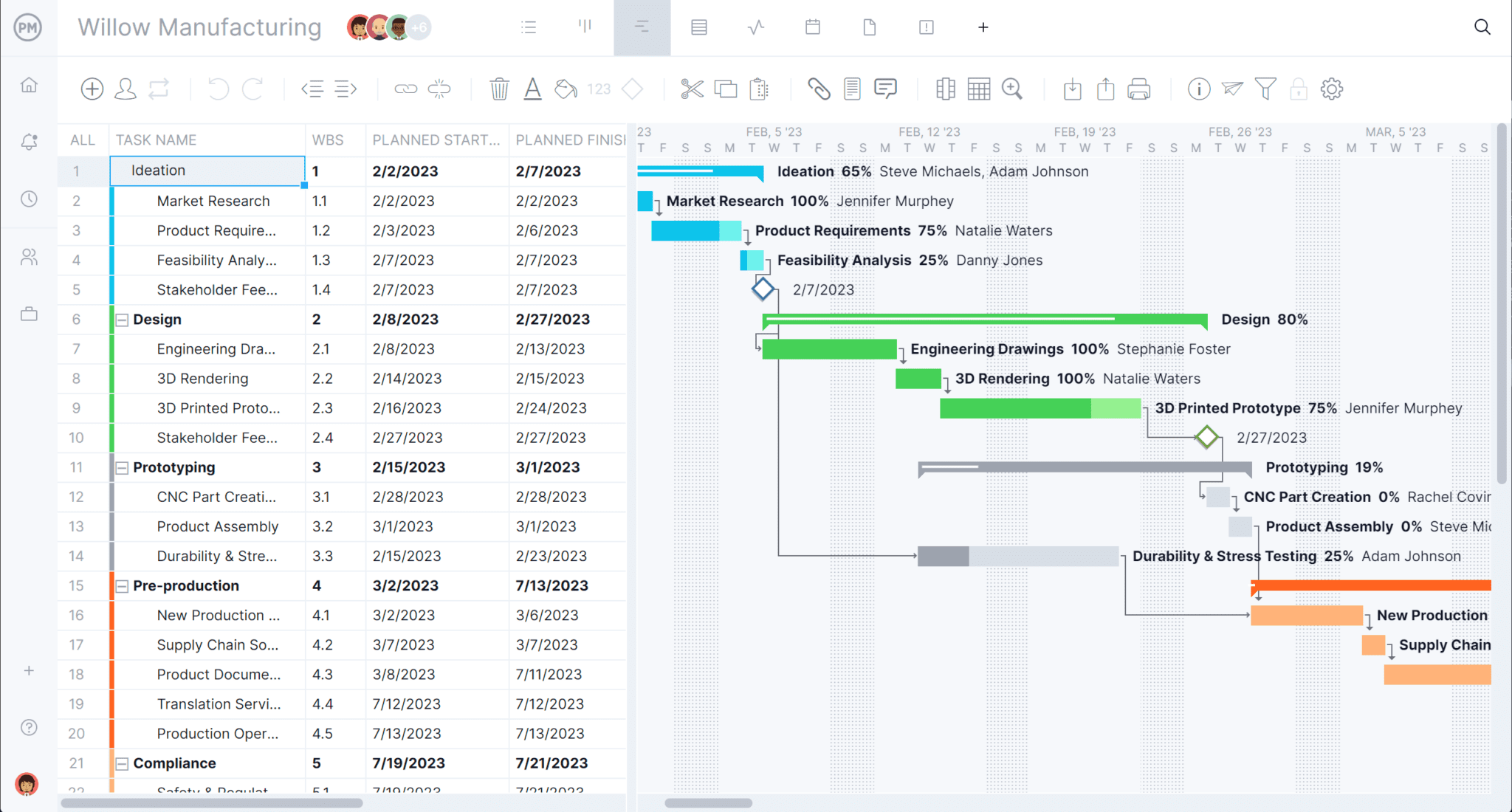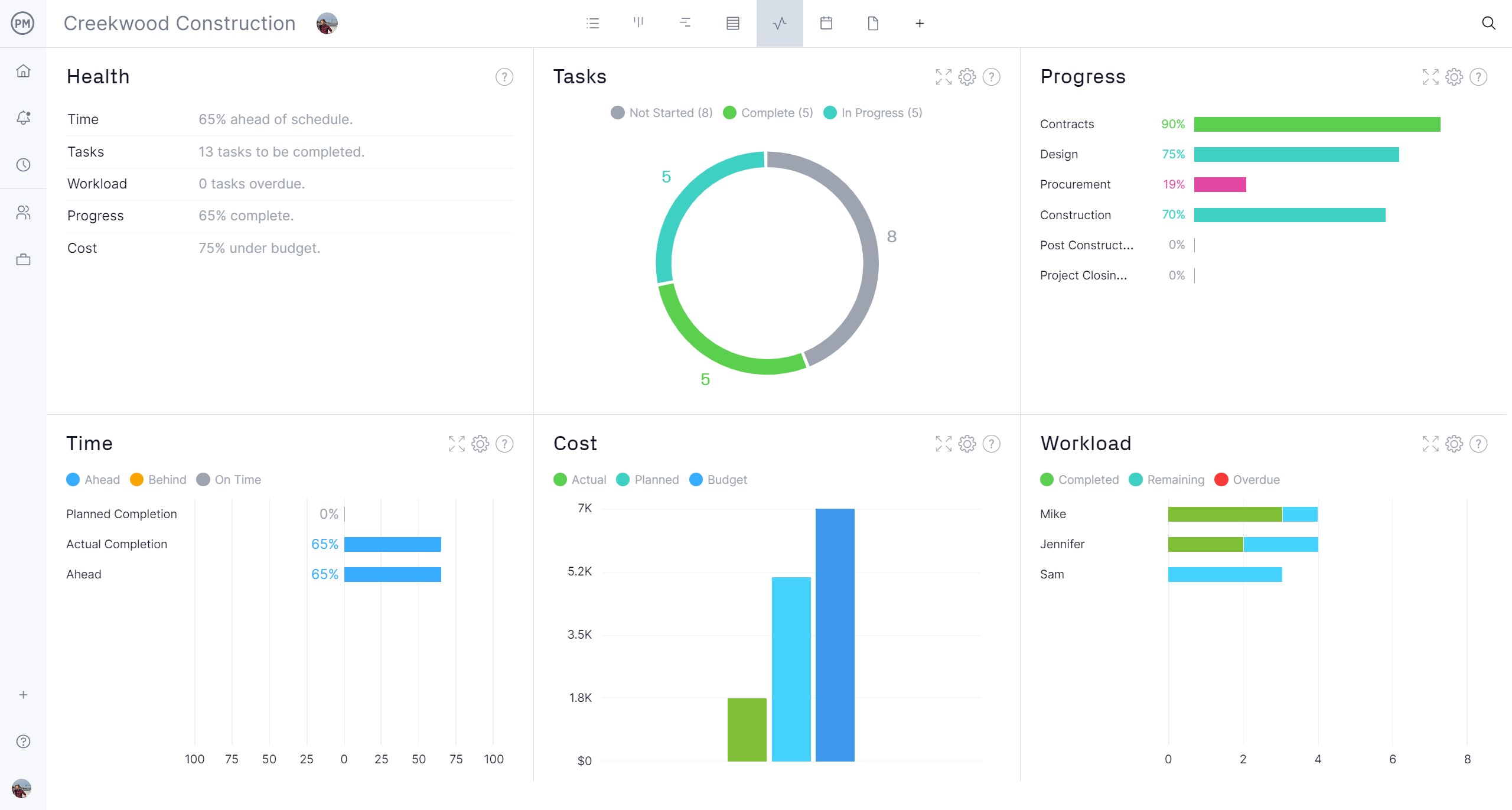Manufacturing is an ongoing process. Making sure resources are in working order keeps production moving forward and helps you stay productive. This is true in other industries where maintenance planning is essential to successful projects and productivity.
What do we mean when we say maintenance planning? We’ll explain and show how it differs from maintenance scheduling. Then we’ll explore the various types of maintenance planning strategies and how to create a maintenance plan, which can serve both manufacturers and construction professionals.
What Is Maintenance Planning?
Maintenance planning is a process to determine which assets or facilities need to be kept up, where this needs to happen and with what frequency. This requires identifying the resources needed for maintenance. That can be anything from spare parts to materials to keep everything functional.
Maintenance planning is responsible for ensuring that all assets are in good working order and being prepared to respond to minor to major issues as they arise. Things happen; equipment could fail or you need to keep machinery well-oiled and maintained so it works at its ideal capacity. Maintenance planning is a proactive step towards anticipating risk and keeping everything working at its best.
Maintenance planning isn’t restricted to nonhuman resources but includes human resources. The ability to keep teams working at capacity, but not overworked and threaten burnout and poor morale requires project management software. ProjectManager is award-winning project and portfolio management software that helps plan and manage resources in real time.
Onboarding teams is easy and so is setting team availability, such as PTO, vacation time and global holidays, which makes assigning tasks a breeze. Then check out the color-coded workload chart. See at a glance who’s overallocated and balance their workload from the chart to keep everyone productive. Get started with ProjectManager today for free.
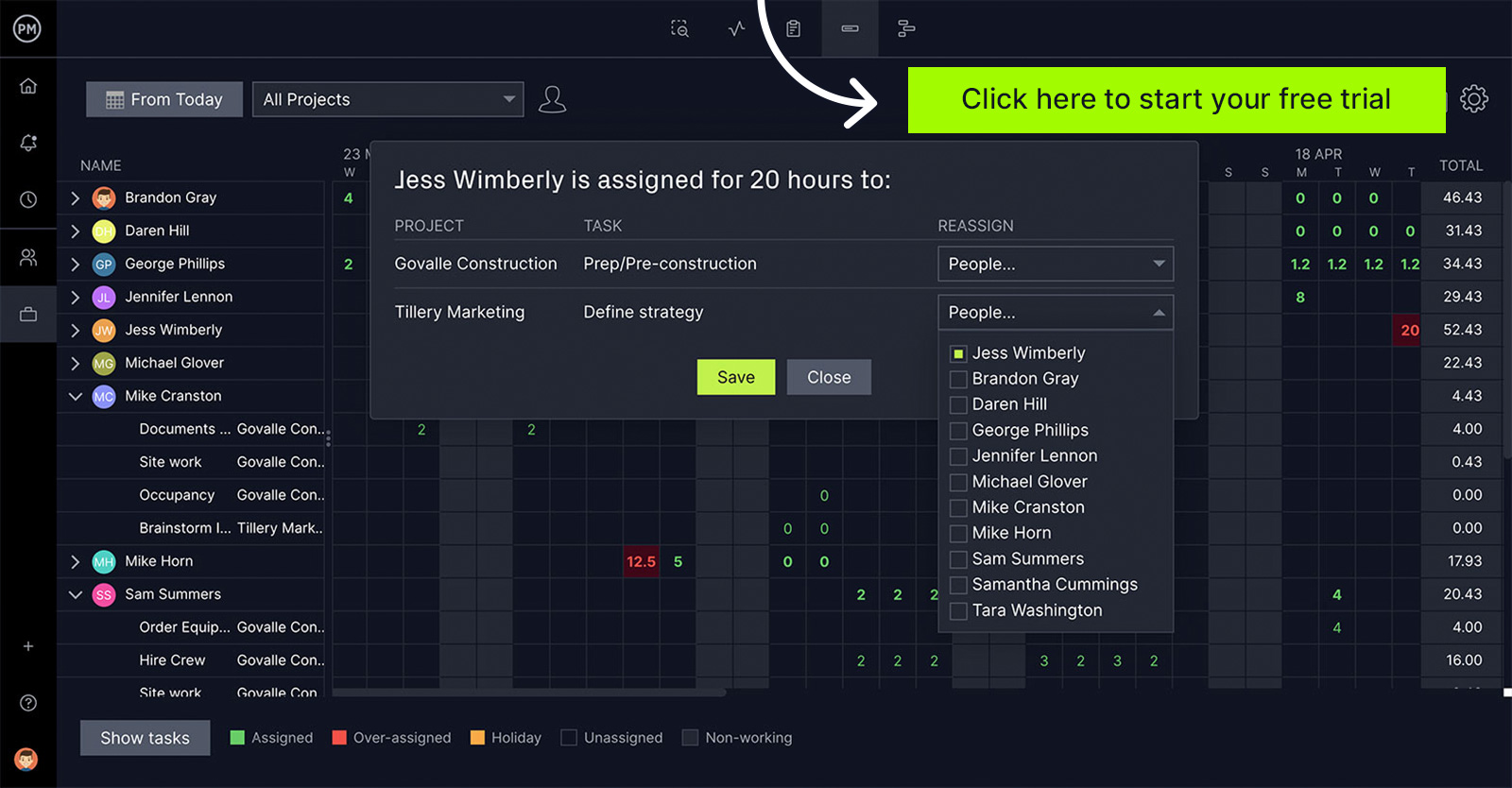
Types of Maintenance Planning Strategies
As previously mentioned, maintenance planning is top-level work. Therefore, it’s strategic. But there’s more than one type of maintenance planning strategy. Let’s take a moment to review four of the most common maintenance planning strategies.
Predictive Maintenance
As the name suggests, this maintenance planning strategy is all about foreseeing potential equipment failures using machine sensors and other advanced technologies. This includes visually inspecting the machinery, but using a computerized maintenance management system (CMMS) creates greater efficiency as it can go through all your equipment inventory faster, tracks meter readings and more. Of course, one must have the funds to invest in a CMMS.
Preventive Maintenance
Also known as proactive maintenance, this approach will periodically pause operations to inspect or repair equipment. These set intervals are either time-based or event-driven. Either way, they aim to increase the lifespan of the assets by avoiding any debilitating malfunctions.
Reactive Maintenance
Often called breakdown maintenance or run-to-failure, you can guess the philosophy behind this strategy: don’t fix it until it’s broken. In this case, there’s no plan, so it’s best to use this strategy only on nonessential equipment or where operations are at a low cost. There will be machines that are less expensive to fix when they’re broken than regularly maintained, but you’ll need to identify which ones.
Condition-Based Maintenance
This looks at a single metric and checks it against preset thresholds. This is done by adding sensors to the machines and checking their health periodically. It compares these measurements against the baseline measurements for a healthy machine.
What’s the Difference Between Maintenance Planning and Scheduling?
Maintenance planning and maintenance scheduling are related but not the same. As noted above, maintenance planning is a process for identifying and solving potential problems before they negatively impact production. Therefore, look at maintenance planning as the high-level view of maintenance.
Maintenance scheduling, on the other hand, is the work to maintain resources and when it gets done. It’s the who, what, when and where of tasks, done in a way that the organization gets the maximum amount of hours available, based on resources.
Scheduled maintenance is usually organized by priority. For example, work orders with the highest priority, which have the greatest impact, will go first. Maintenance schedules often use internal labor to cut costs and speed up work. Preventive maintenance is also part of scheduling maintenance, which minimizes downtime and increases efficiency.
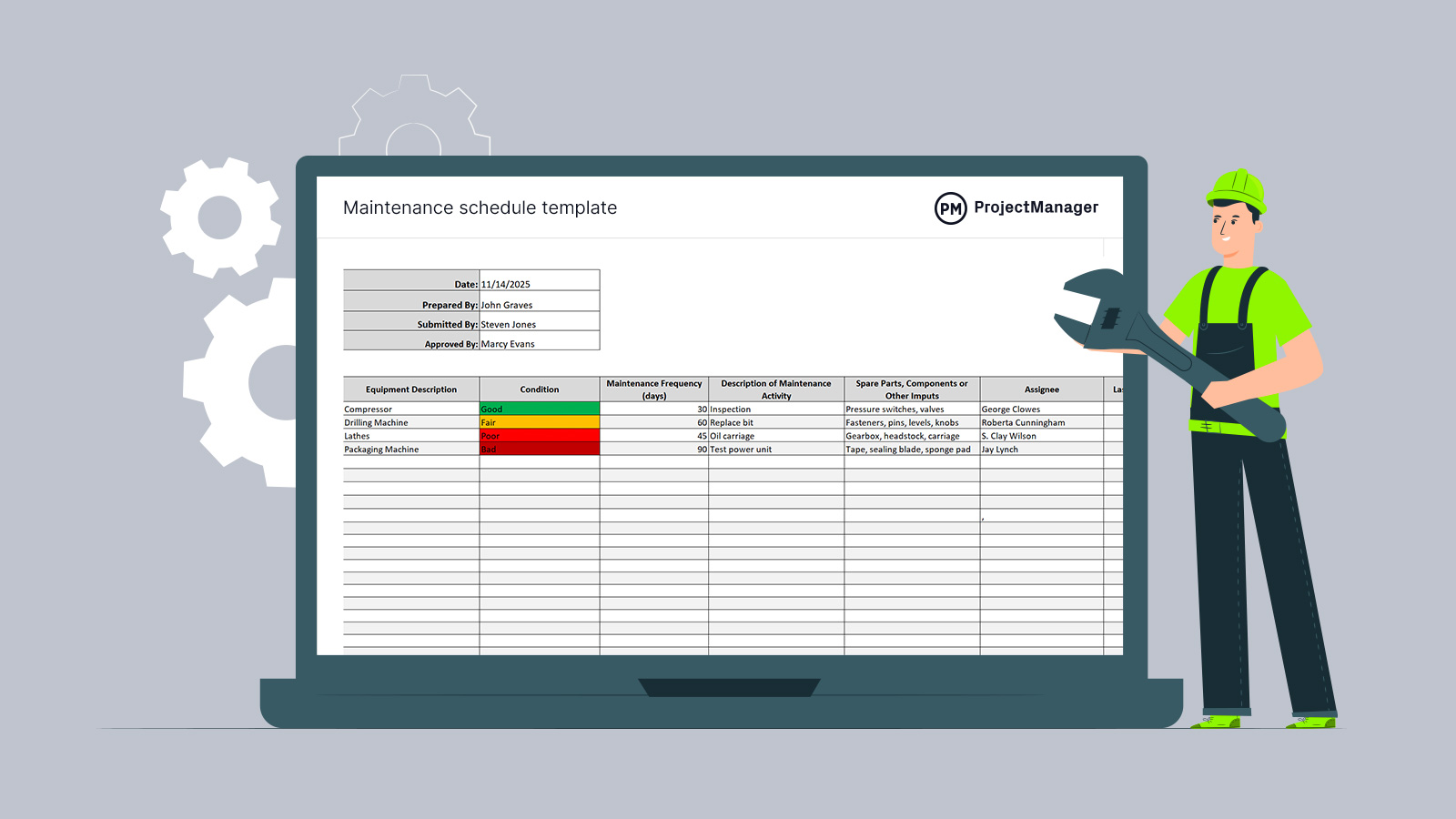
Get your free
Maintenance Schedule Template
Use this free Maintenance Schedule Template for Excel to manage your projects better.
What Is a Maintenance Plan?
We’ve talked a lot about maintenance planning and now it’s time to define a maintenance plan. A maintenance plan prescribes maintenance actions, including intervals, repair levels and locations, personnel numbers and skills, technical data, tools, equipment, facilities and spare parts.
The maintenance plan is a document that defines the work that must be done to keep the equipment in good working order and at optimum performance. It should cover all the features of the facility’s maintenance policy and inventory all assets to ensure they aren’t neglected.
What Should Be Included In a Maintenance Plan?
To build an effective maintenance plan, include the following.
Equipment Inventory
List all the equipment inventory. Anything that can break down or needs to be maintained should be included. These assets can include boilers, pumps and roofs. Be thorough and don’t leave out anything or suffer the consequences later.
Maintenance Tasks
Identify the specific maintenance tasks for each asset and piece of equipment that the company has. More than just a list, each task must be clear and have detailed instructions on what needs to be done.
Maintenance Schedule
Tasks must be scheduled, which will lead to a more successful execution of the maintenance plan. Be sure to consider such things as setting a priority level for each task, noting the availability of resources and the operational schedule of operations and maintenance teams.
Maintenance Team
As always, the team is the most valuable resource. How effectively the maintenance plan is executed rests on the shoulders of your team and their skills and reliability. If the organization is big enough, they can have a dedicated maintenance team. Otherwise, they’ll have to allocate and assign team members to different areas.
Spare Parts and Components
Consider the spare parts, tools and other materials needed for the maintenance team to execute their tasks. Identify the items and make sure they are on hand so they’re there when they need them.
Work Order Form
Having a standardized information system, such as a work order form, communicates to the maintenance team what needs to be done. This creates efficiency but also sets a standard that the work has to live up to.
Equipment Maintenance Log
This document records asset maintenance activities so they can be monitored to ensure that checkup processes and maintenance are being carried out. Tracking the equipment maintenance done by technicians, including the day, time and purpose of each task, ensures that the equipment is properly maintained.
Maintenance Schedule Template
Our maintenance schedule template helps create an action plan so you can better manage your resources, allowing you to ensure they’re fully functional when you need them. Download our free template to improve equipment performance and longevity.
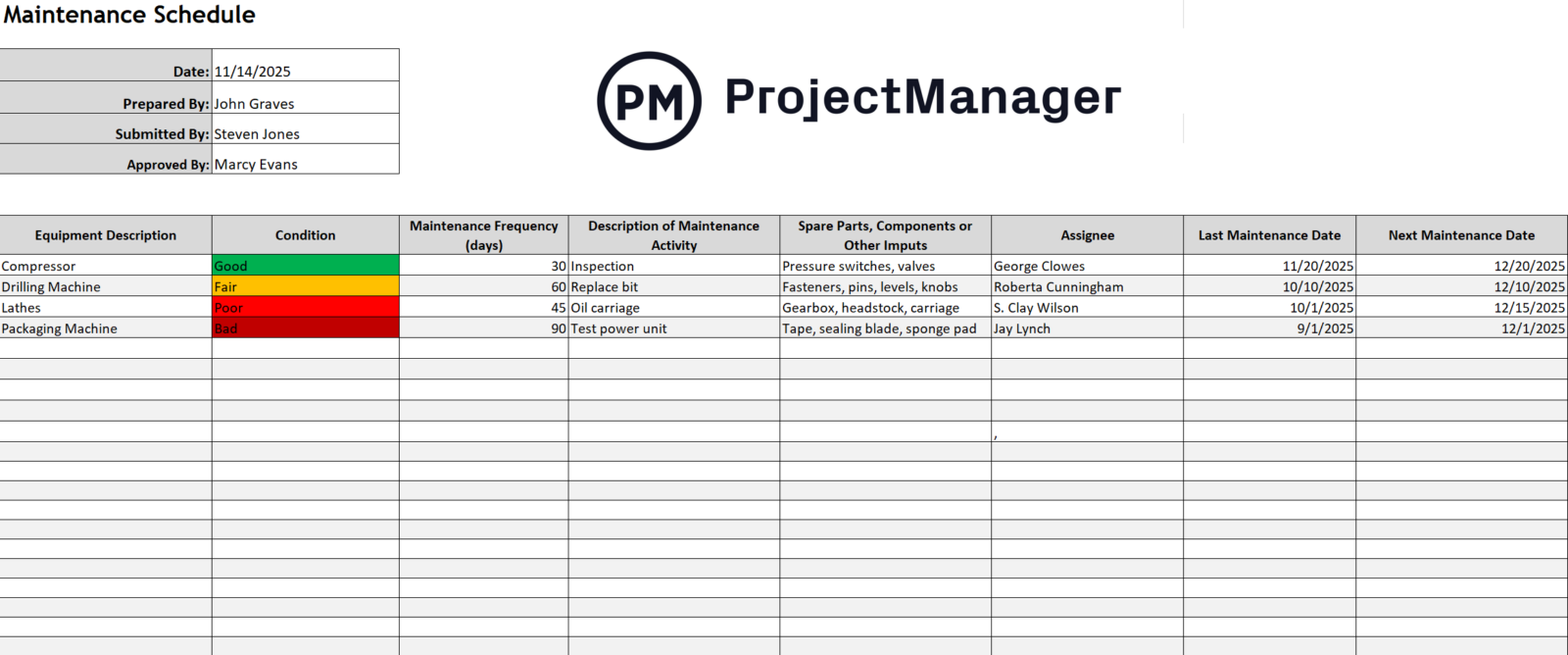
Benefits of Effective Maintenance Planning
There are many benefits to maintenance planning. Below are only a few of the more important ones.
- Increases the lifespan of assets
- Reduces risks of breakdowns
- Adds efficiency
- Less unplanned downtime
- Promotes health and safety
- Saves money
What Industries Can Benefit From Maintenance Planning?
Many industries benefit from maintenance planning. From industries such as oil and gas, mining and power generation to shipping, fleet management and data centers, all work more efficiently thanks to maintenance plans. Let’s focus on two major industries that benefit from maintenance planning.
Construction
Construction sites benefit from maintenance planning. It improves the efficiency of construction equipment and results in fewer emergency work orders. Decreased downtime leads to subcontractors working at capacity and getting their tasks done sooner. Equipment lasts longer and the safety of the job site improves. All this leads to cost savings for the general contractor and ensures their profit margin as well as greater client satisfaction.
Manufacturing
Manufacturers can benefit from similar things. For example, reduced downtime and increased efficiency lead to a smooth-running production process and the timely delivery of products. Maintenance keeps the equipment operative and extends its life. Avoiding breakdowns also relieves pressure on the supply chain to come up with spare parts for repairs. It also frees staff to be put to use where they’re most needed.
More Free Maintenance Planning Templates
We have over 100 free project management templates for Excel and Word that help across industries and for every aspect of a project. Download a few free maintenance planning templates right now.
Work Order Template
Use our free work order template for Excel to provide all the information about a maintenance task and outline the process for completing the task. Our free template describes the job and breaks down the description of work, including hours and rate.
Equipment Inventory Template
With our free equipment inventory template for Excel one can list the name of the machinery, serial numbers and loan payments, if applicable. The free template can even calculate the depreciation information to help determine when to replace rather than maintain the equipment.
How ProjectManager Helps With Maintenance Planning
Templates have a place in maintenance planning. They’re great for lists, but they’re not so good at collaborating or connecting with the larger project. Templates are static documents that take time away from project work to manually update. They’re not efficient. ProjectManager is award-winning project and portfolio management software that can manage maintenance on kanban boards or task lists, with recurring tasks to ensure never missing scheduled maintenance. More than that, you can create maintenance schedules and track costs to keep to the budget.
Create Visual Maintenance Schedules
Use our robust Gantt charts to schedule maintenance. Add tasks, assignments, duration, resources and costs on the spreadsheet side of the Gantt chart, which automatically populates the right-hand timeline side of the Gantt chart. Link all four types of task dependencies to avoid costly delays and set a baseline to capture the maintenance schedule. This allows you to track the planned versus actual effort in real time.

Track Costs With Timesheets and Dashboards
Costs can quickly get out of hand. Toggle over to the real-time dashboard, which automatically captures live data and displays it on easy-to-read graphs and charts. View time, cost, workload and more, like an instant status report whenever you want one. Unlike lightweight competitors, our dashboard doesn’t require any lengthy and complicated setup. There are also secure timesheets that streamline payroll and give managers visibility into labor costs.

Related Maintenance Planning Content
Maintenance planning is a large subject and we’ve only scratched the surface. Interested in reading? We publish weekly blogs, tutorial videos, and, of course, free templates to download. Here are some of the maintenance planning content we’ve published.
- Total Productive Maintenance Essentials: 8 Things You Need to Know About TPM
- Manufacturing Operations Management Explained
- Equipment Inventory: A Quick Guide
ProjectManager is online project and portfolio management software that connects teams whether they’re in the office, out on the jobsite or facility floor. They can share files, comment at the task level and stay updated with email and in-app notifications. Get started with ProjectManager today for free.

